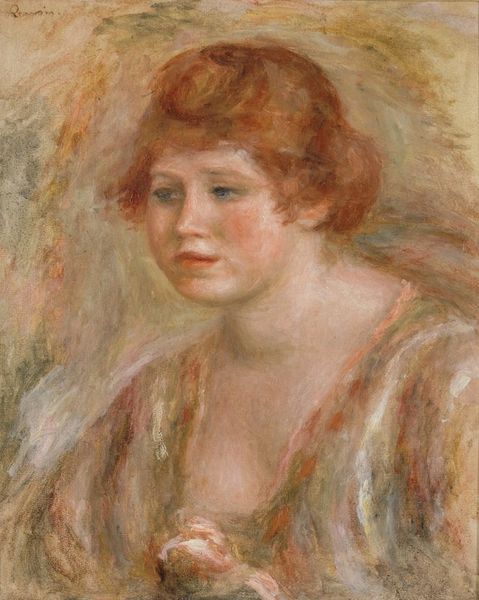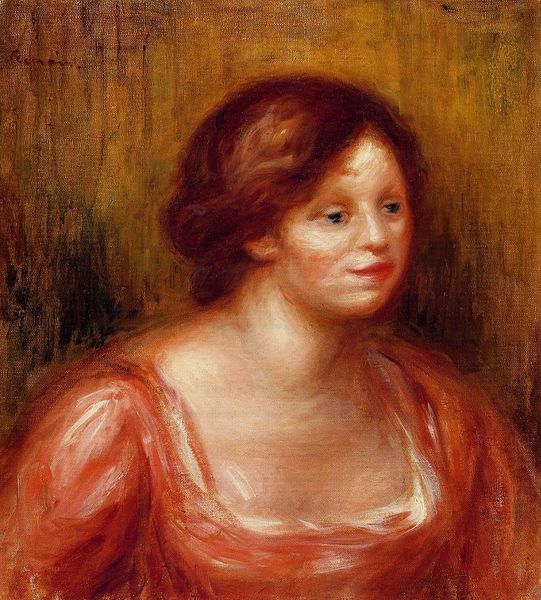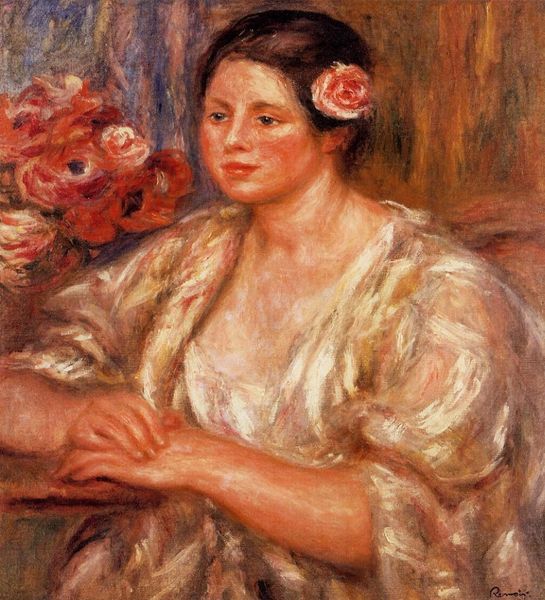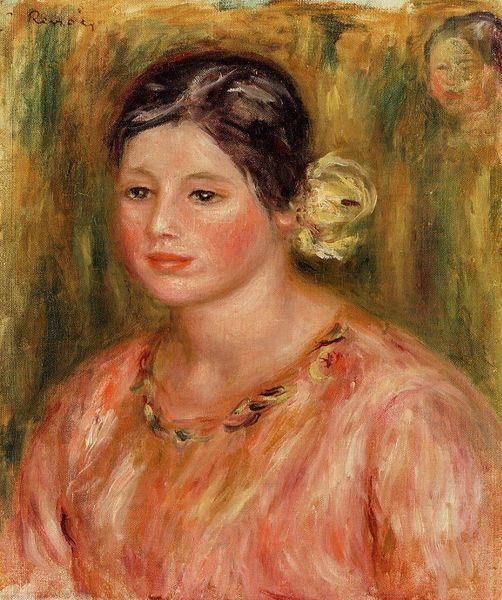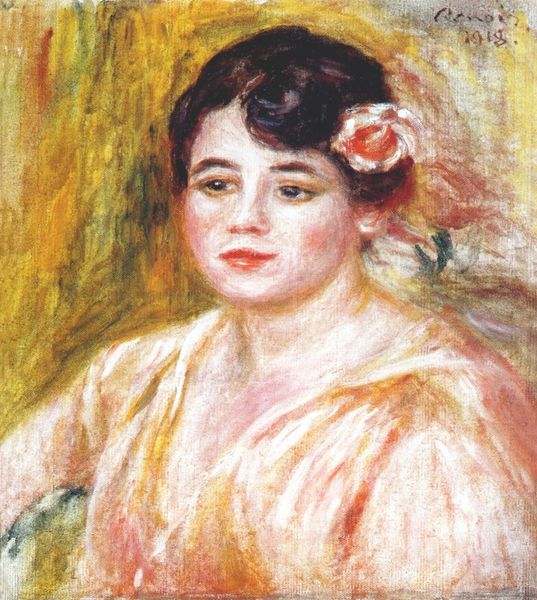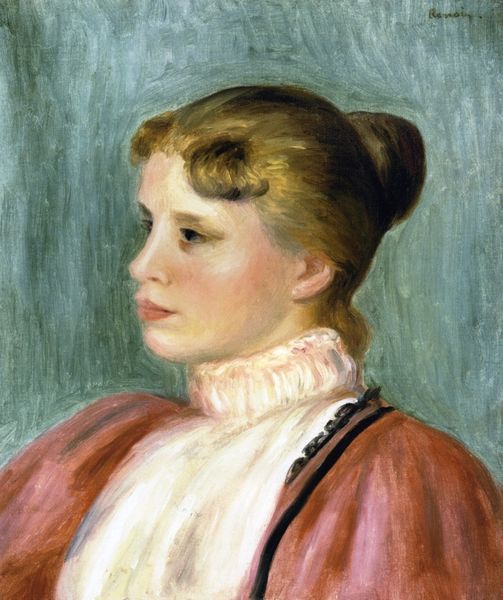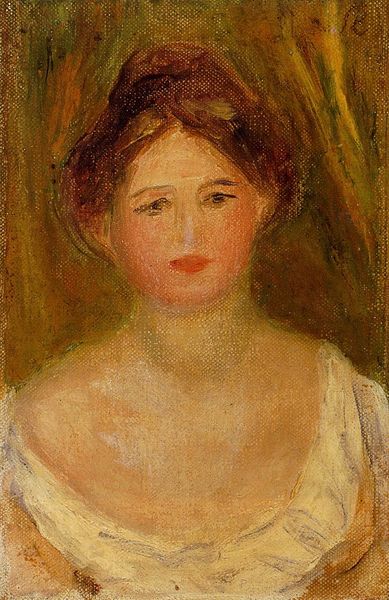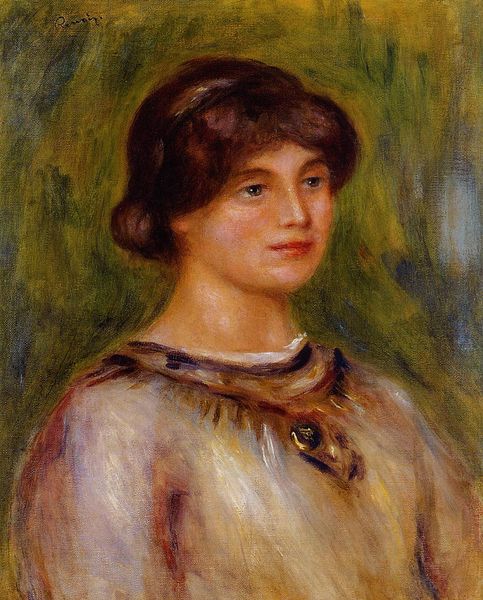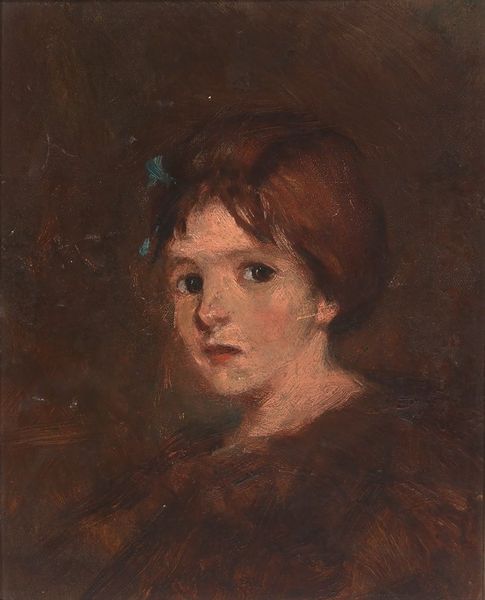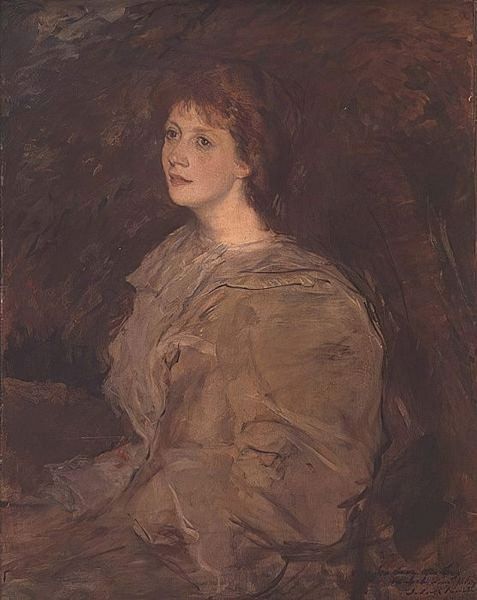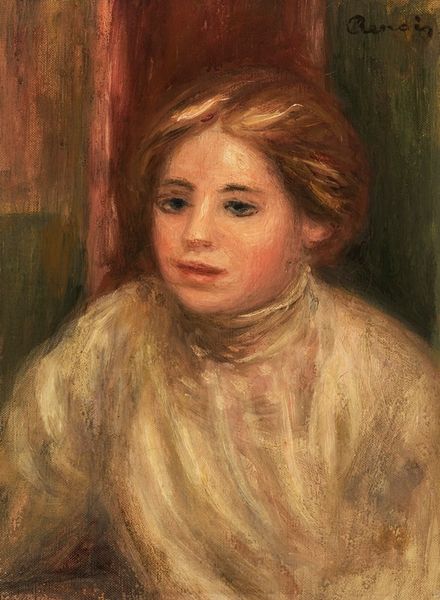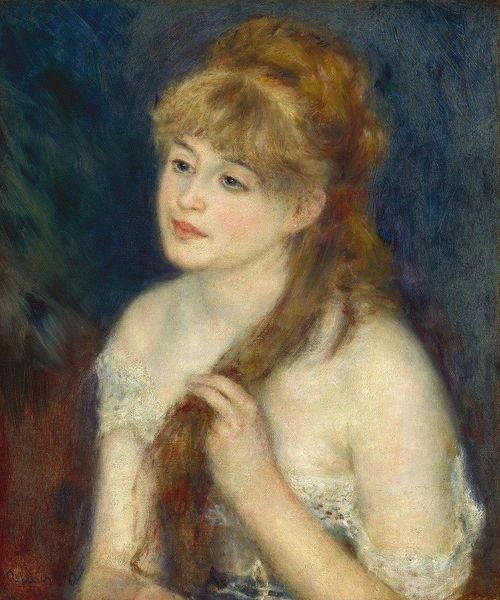
Copyright: Public domain
Curator: Let’s discuss Renoir's “Portrait of a Young Woman” from 1887, currently held in a private collection. Editor: There’s a softness to it, a gentle dreaminess in the color palette that strikes me immediately. The blurred edges give her face a sort of ethereal quality. Curator: Absolutely. Renoir's known for that delicate application of paint. Think about the Impressionists’ interest in capturing light and fleeting moments—the materiality itself reflects that transience. What kind of canvas would he have favored? What were his pigment choices and how were they affecting how fast the work would dry, forcing him to make quick decisions on what to capture on the surface? Editor: Considering its presence in a private collection, one wonders about the dynamics of art patronage at the time. The elite collecting impressionist works had a distinct cultural impact, signaling changing social and aesthetic values as new imagery gets produced that challenges traditional ones. Who commissioned it, and how did that impact the way she’s been represented, styled, and presented for public consumption? Curator: Exactly. And you can even see those effects within the painting itself; Renoir’s brushstrokes feel effortless but betray a deep understanding of material manipulation, building up thin layers of oil paint that would have been applied very differently by someone working, say, within a more academic tradition. The loose, visible strokes celebrate the "hand" of the artist, demystifying labor as its representation becomes as valuable as what it captures. Editor: It brings up a vital question: How do these representations of women through paint serve, and also possibly constrain, female agency? Did the young woman have a say in her own image? I can see why the museum, which at the time wasn’t very active, might not champion this type of work; because, instead, it prioritized heroicized male figures. This more subdued depiction possibly lacked the historical grandiosity that resonated with institutional narratives back then. Curator: Fascinating! Focusing on the artist’s material practice helps contextualize it as a marker of broader societal trends influencing art’s journey. Editor: Examining the institutional setting shapes our understanding of shifting attitudes around Renoir's art and portraiture's role during a pivotal era in image production.
Comments
No comments
Be the first to comment and join the conversation on the ultimate creative platform.
